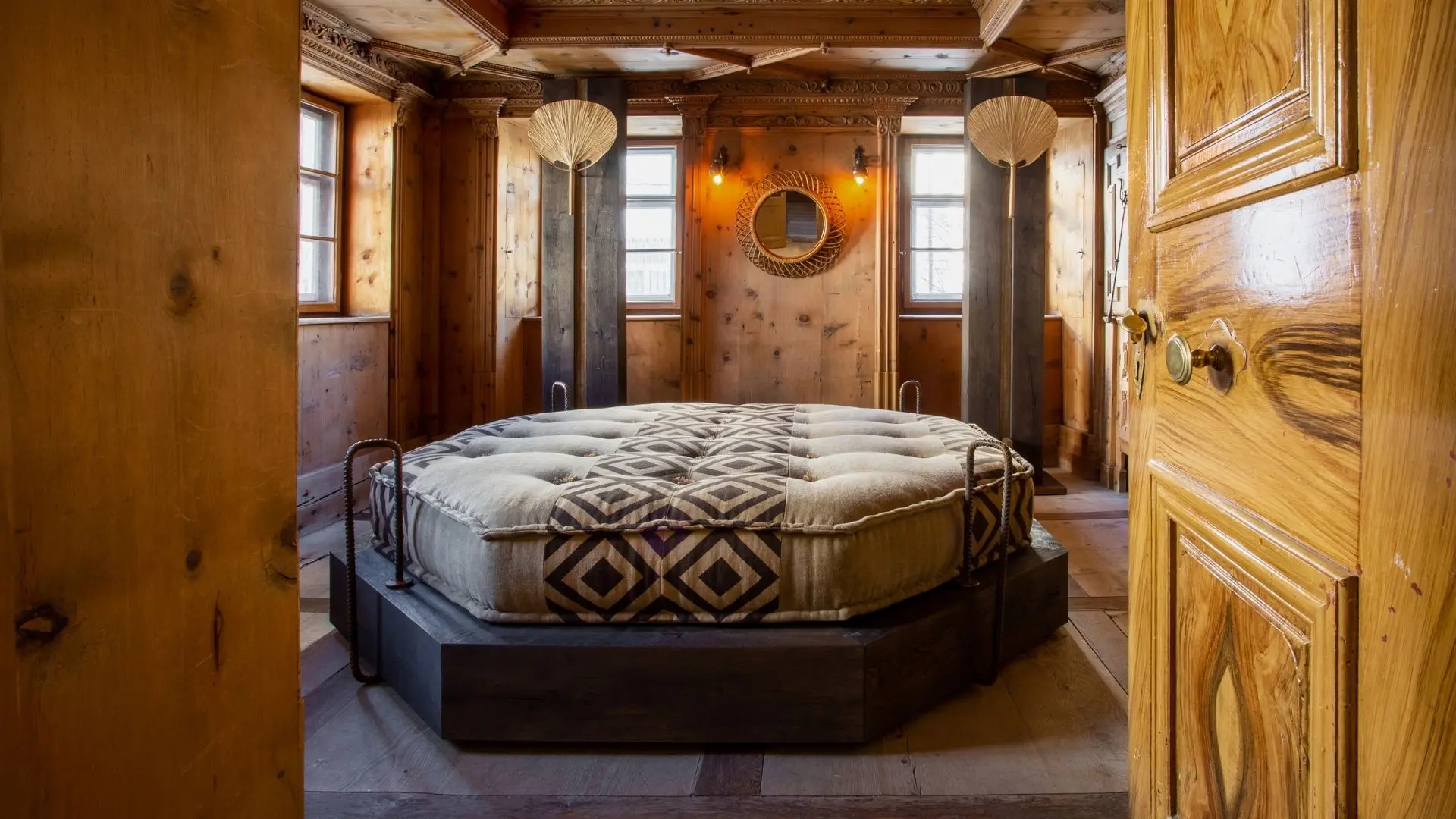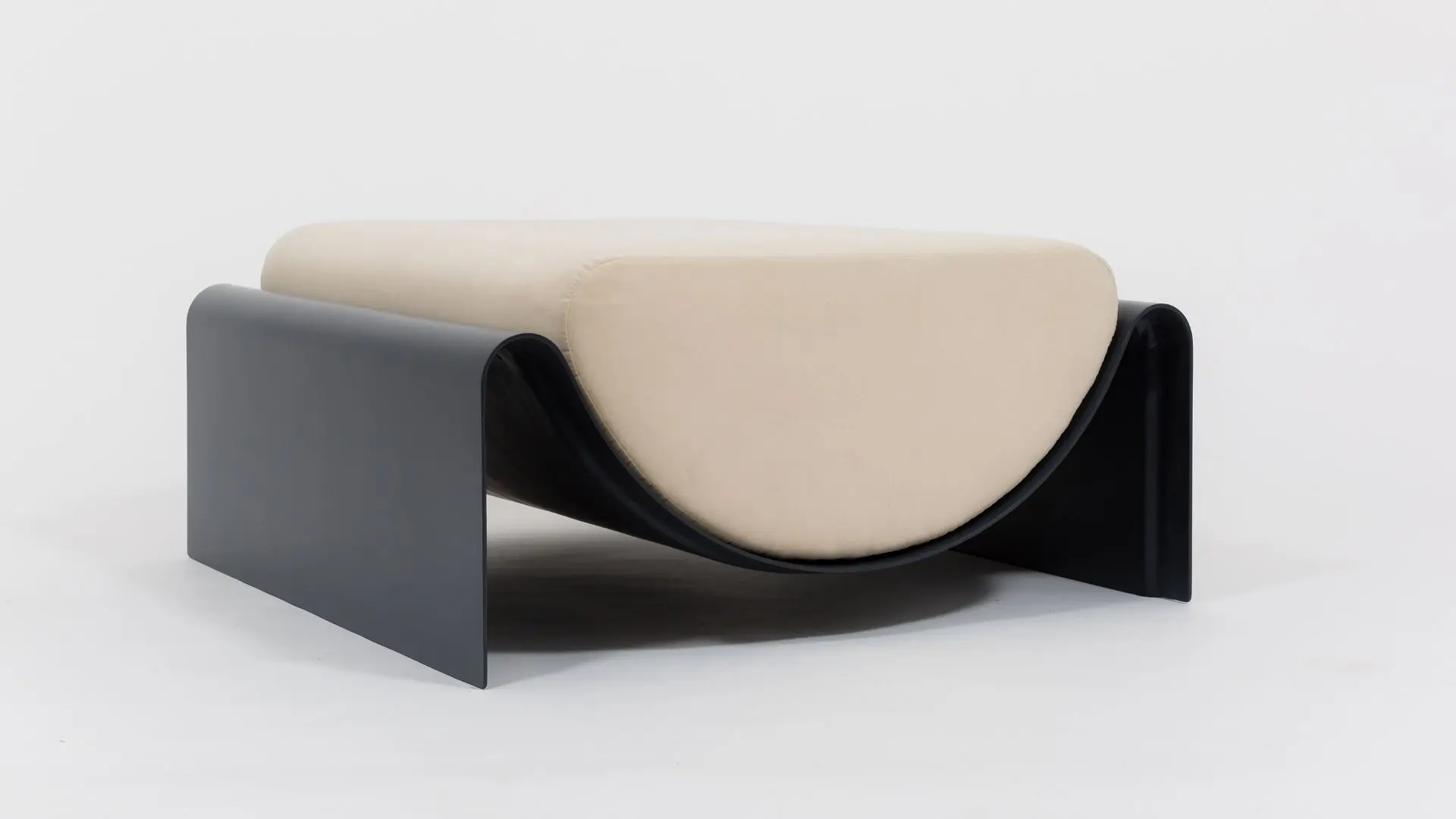Neal Aronowitz moulds flexible concrete into sculptural furniture
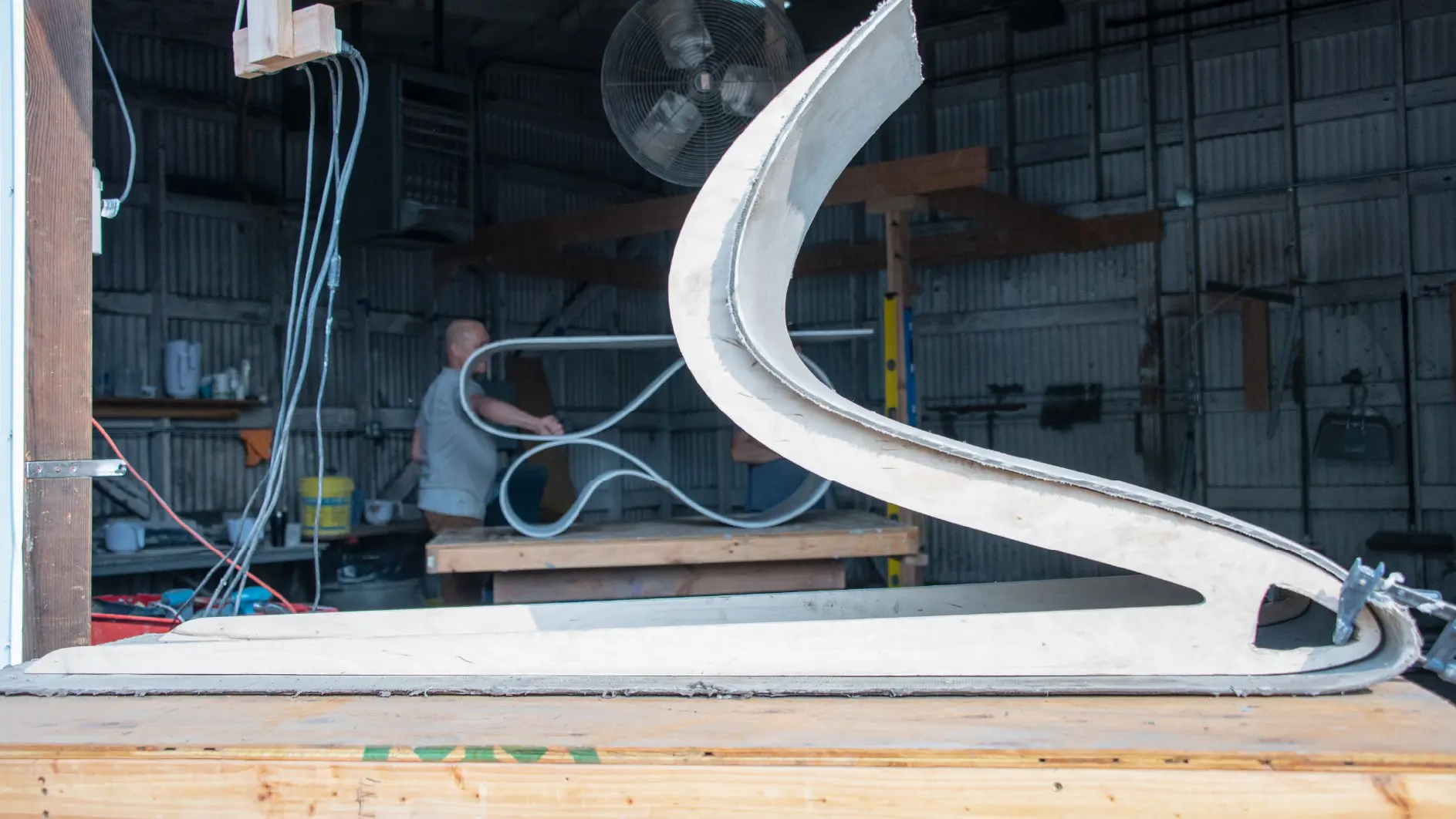
The Portland-based designer folds the pliable material in on itself to create swooping furniture like this table.
Using a uniquely flexible and ultra-thin concrete, designer craftsman Neal Aronowitz has created flowing pieces of furniture that fold in on themselves like this console table. Called “Concrete Canvas”, the pliable and cloth-like material is formed from fabric impregnated with cement, which hardens on hydration to form a thin, durable, waterproof and fire-resistant layer.

“Essentially it is concrete cloth on a roll,” explains Neal Aronowitz, who runs his own design studio but also has extensive experience in construction. Inspired by this material, about eight years ago he decided to pursue a full time career as a designer.
“I found Concrete Canvas fascinating,” he says. “I thought it would be interesting to try and turn it into something from a designer’s point of view. It’s an industrial material and I had the idea to make furniture out of it.”
“I’ve been discovering what I enjoy as I go and it seems I like to create complicated things.”

Concrete Canvas
Unlike most concrete, Concrete Canvas is not classed as an irritant, and uses a phthalate-free PVC backing chosen to minimise its impact on the environment. As a result, the material can safely be installed without adverse effects on wildlife or the local ecology.
According to Aronowitz, Concrete Canvas reduces the environmental impact of concrete applications by up to 95%.
In addition to its environmental benefits, the material can be easily rolled out in strips and applied to pre-prepared molds. It has been used to construct rapidly deployable shelters – particularly in disaster relief situations – as well as for erosion control and ditch lining in as an alternative to shotcrete.
The pliability of the material makes it possible to create designs that would normally be impossible using standard concrete.
Curious to peek behind the scenes of great designs? Find out more on Studio ThusThat using waste products from copper to make lamps.

“The idea behind the Whorl series was to make a handcrafted piece that has presence as both sculpture and as functional furniture,” adds Aronowitz, who is one of the first designers to use the material to create furniture.
“Concrete has a heavy and very dense feeling to it, and I was trying to create something very light. With Concrete Canvas, it almost has a feeling of anti-gravity.”
The Concrete Canvas Series of furniture also features the Todos and Enso tables, which have similar ribbon-like designs. To create these organic and sinuous forms, Aronowitz uses a specially developed casting technique involving custom-made wooden moulds.

“A complex and very precise five-part mold was designed and constructed out of wood to fabricate the Whorl console,” he explains. But first, the Concrete Canvas has to be cut to size.
“The roll is cut down to size and the cut ends are sealed in order to prevent concrete from escaping from the canvas during the fabrication process.” Next, the concrete is prepared by immersing it in water, which gives it the flexibility necessary to create such unique shapes.

“A 22-foot long trough was built to hold water and allow the Concrete Canvas to be unfurled and saturated in water for an hour. Then, the Concrete Canvas is wrapped around the wooden molds and clamped into position.”
At this point, the furniture-making process is a game of countdown, with only half an hour of working time available before the fabric becomes too hard to manipulate. When Aronowitz is finished, the piece is covered with plastic and left to set and dry fully overnight.
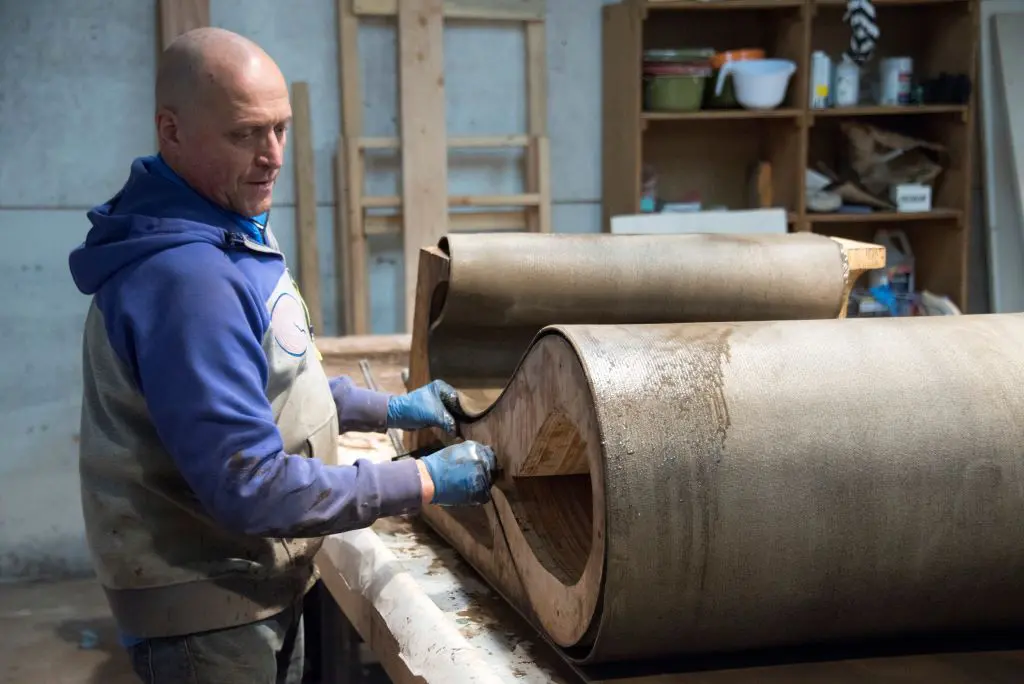
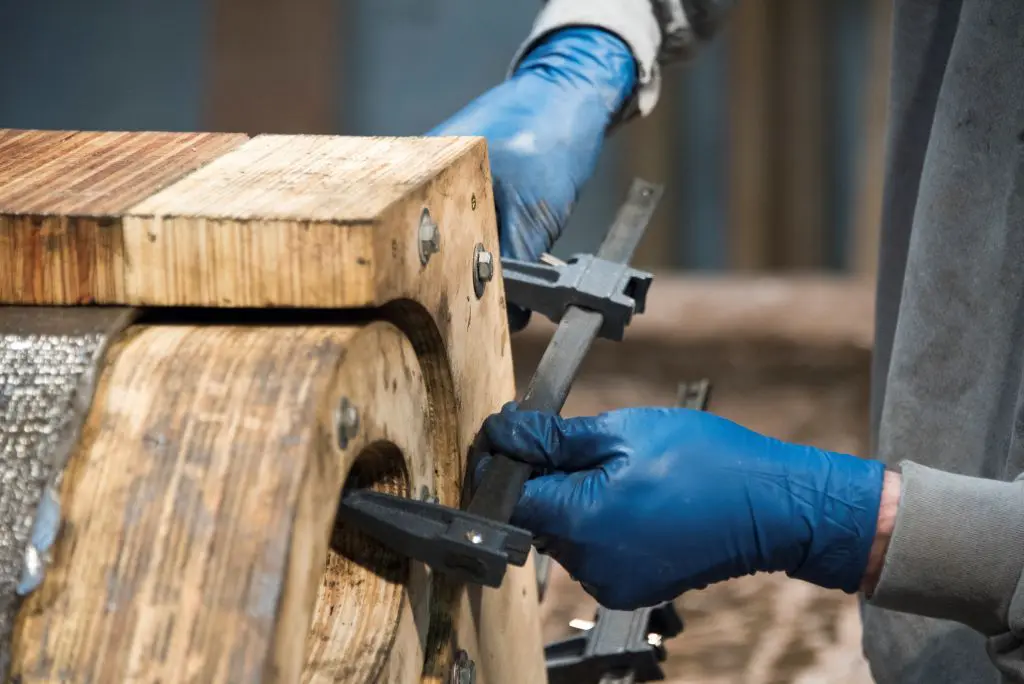

“When it is hard enough, the molds are removed and the structure is reinforced with a wire mesh and covered with cement mortar to give it additional strength.”
Aronowitz sands the piece to achieve a polished finish which is then custom colored with cement pigments to create a finish that mimics actual concrete. The surface is then sealed to prevent it from staining.
A single piece of furniture like the Whorl console can take up to 125 hours of work.


What is the final product?
The final product is a minimalist console table that explores the unique structural properties of this material. Seemingly defying gravity, the Whorl Series expresses a light, fluid, lyrical form in contrast to the dense and heavy associations with concrete.
“I thought that the first table would only take me about six weeks to develop but it took me about a year,” says Aronowitz. “The challenge was to stretch the tensile strength of the material to its limits. At the same time, it needed to maintain its structural integrity as a utilitarian object intended for everyday use.”
“The utilization of Concrete Canvas in sculpture and furniture design has only just begun to be explored. The design possibilities for this new material are tantalizing and ripe for exploration.”
Eager to discover more design processes? Don’t miss the one behind Carnerie: A countertop appliance for growing your own meat!






